A Remarkable Excursion to Menorca and Mallorca
Menorca and Mallorca, the Balearic Islands located off the east coast of Spain, provided a feast for the senses including views of a shimmering Mediterranean Sea, wild orange poppies, peppery olive oil, abundant jasmine, rosemary, craggy white stone escarpments enveloped in lush green vegetation, centuries old stone walls, groves of olive trees, and near omnipresent white and reddish Oleander (used as roadway dividers, no less). Sofia Barosso, President of the Madrid-based Around Art, organized and led the tour, the fifth with The Cultural Landscape Foundation (TCLF). Since Sofia had lived on Mallora for many years and knows the Balearic Islands and its people very well, the excursion felt especially personal and intimate—more than visiting sites, we had the privilege of meeting dear friends.
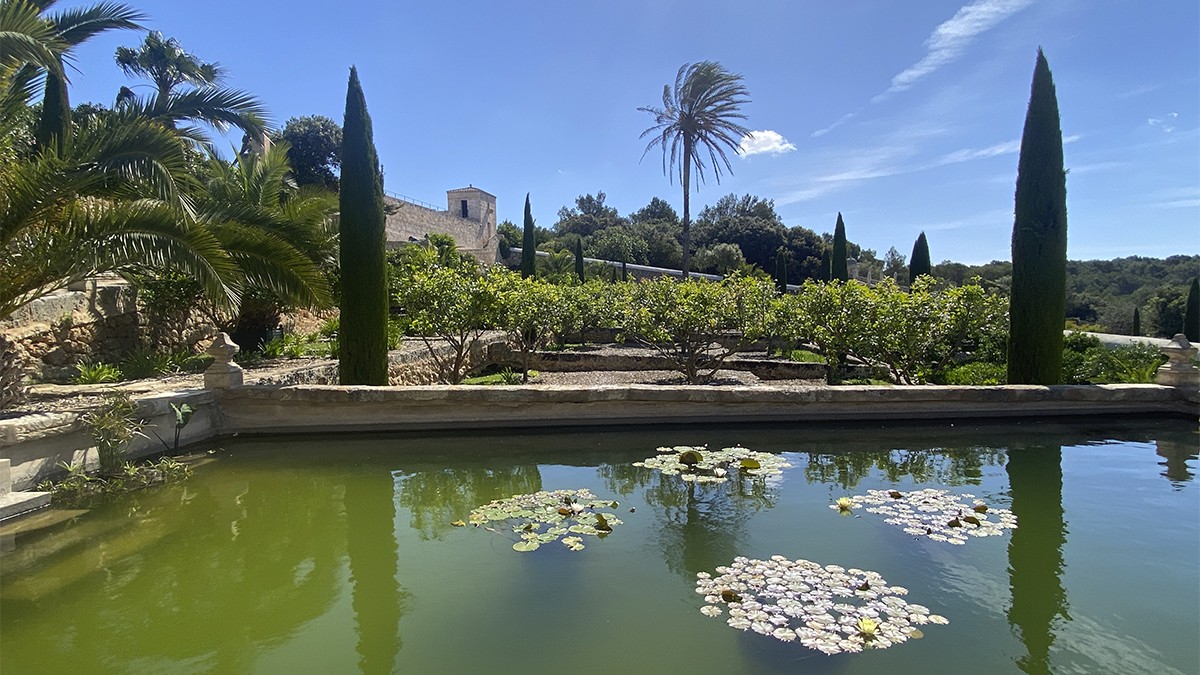
Home base in Menorca, the smaller of the two islands and the starting point for the adventure, was the luxurious, exclusive, and secluded Hotel Fontenilles Santa Rosa featuring a fully modernized eighteenth-century aristocratic residence set within a 250-acre estate.
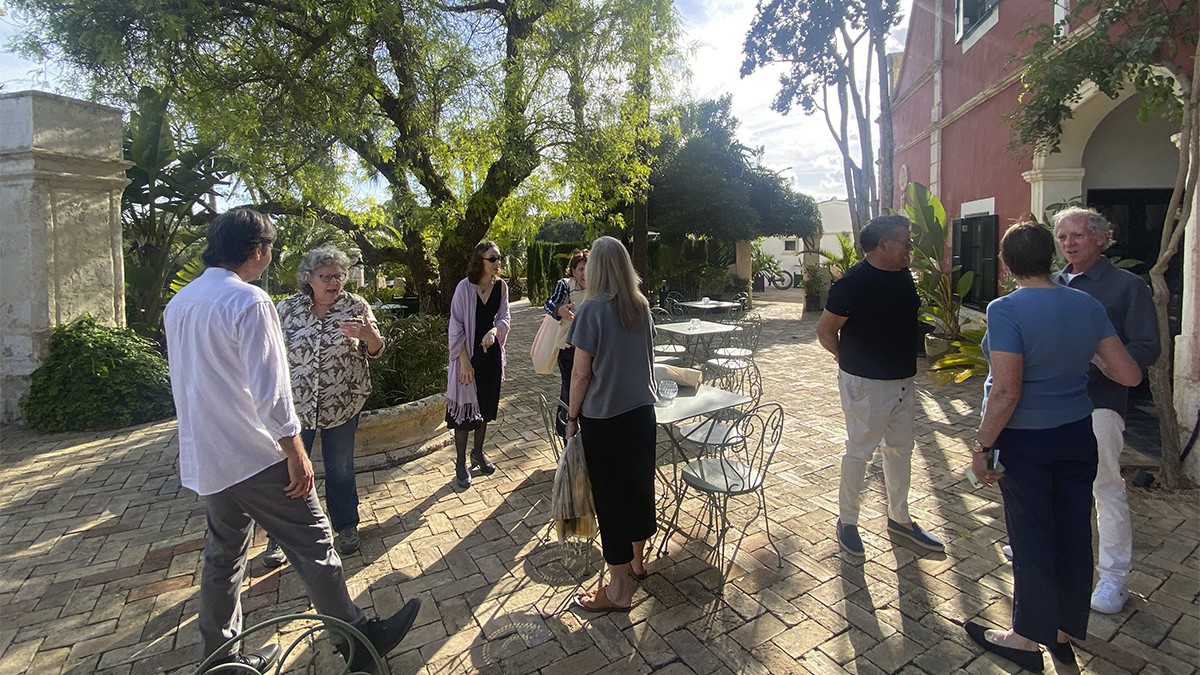

The excursion included a visit to Illa Del Rei, a small island with a former early eighteenth century hospital site that now features an outpost of Hauser & Wirth, the Swiss contemporary and modern art gallery. Two motor boat launches took the group from the Port of Mahon to the island within an island that includes a Piet Oudolf-designed landscape.
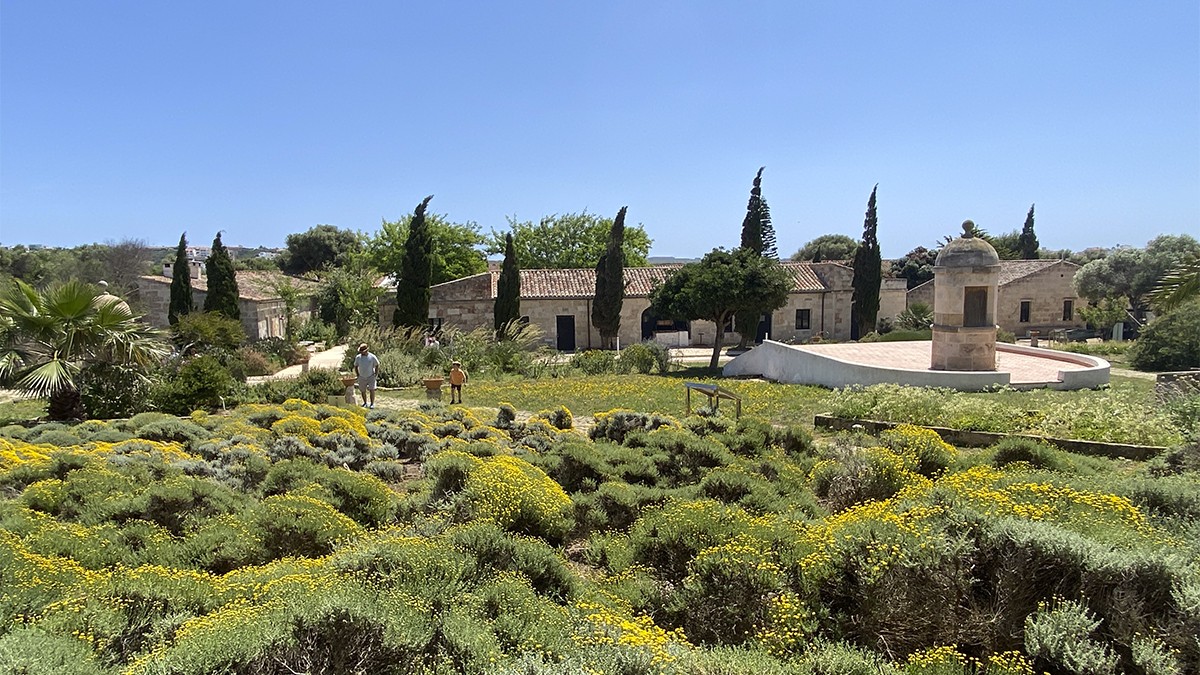
The former hospital, now a museum, includes an aromatic medicinal plant garden. Hauser & Wirth occupies separate buildings; in one of thei galleries, two at-times hilarious Mikka Rottenberg videos, which deal with cycles of production, destruction, ritual, and absurdity, ran on a continuous loop.

The tour also included an al fresco lunch at the “Cantina,” highlighted by a sumptuous paella with wild mushrooms and a crisp white wine. After a refreshing boat tour of the harbor, the group returned to port.
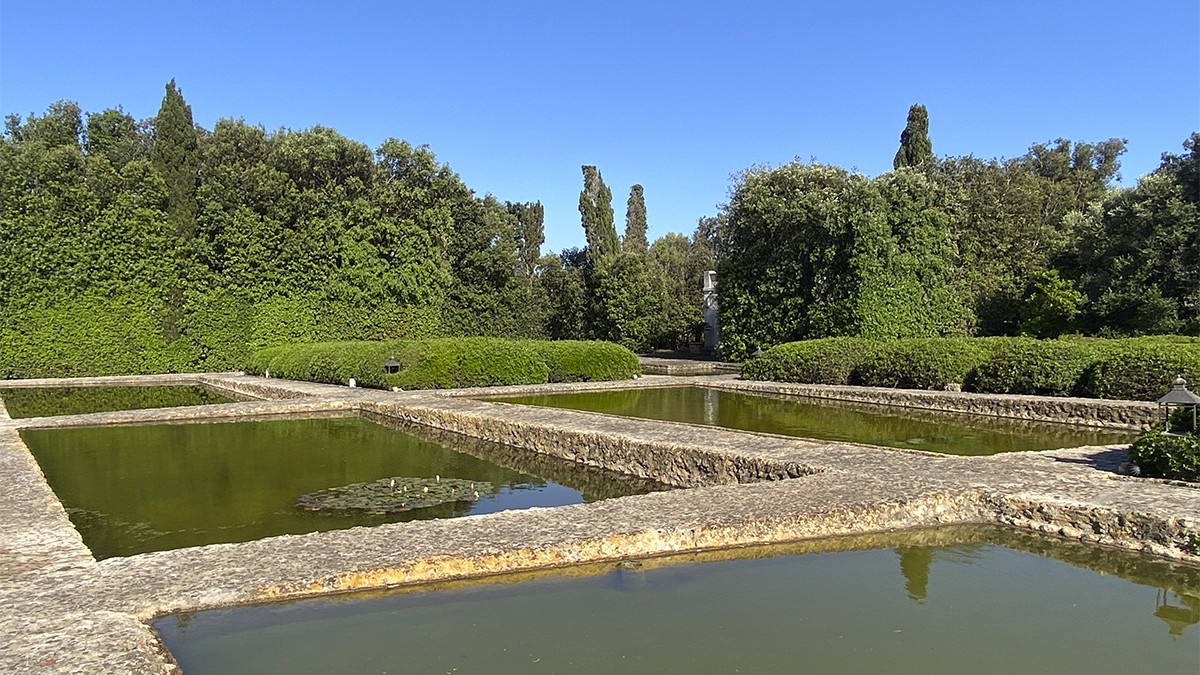
Following a visit to old town of Mahon, the group went to the nearby village of St. Luis to see Camp Sarch, a private residential commission from 1998 by the Spanish landscape architect, Fernando Caruncho. The landscape’s most extraordinary feature is a large irregular rectangular grid of meticulously manicured hedges and pools of water; the grid is shift slightly off axis from an elegant pavilion and tilted up at one corner.
The entire grid slopes down from a near corner to a furthest corner, a seemingly subtle shift in a traditional design concept that yields revolutionary results ... an absolute delight.
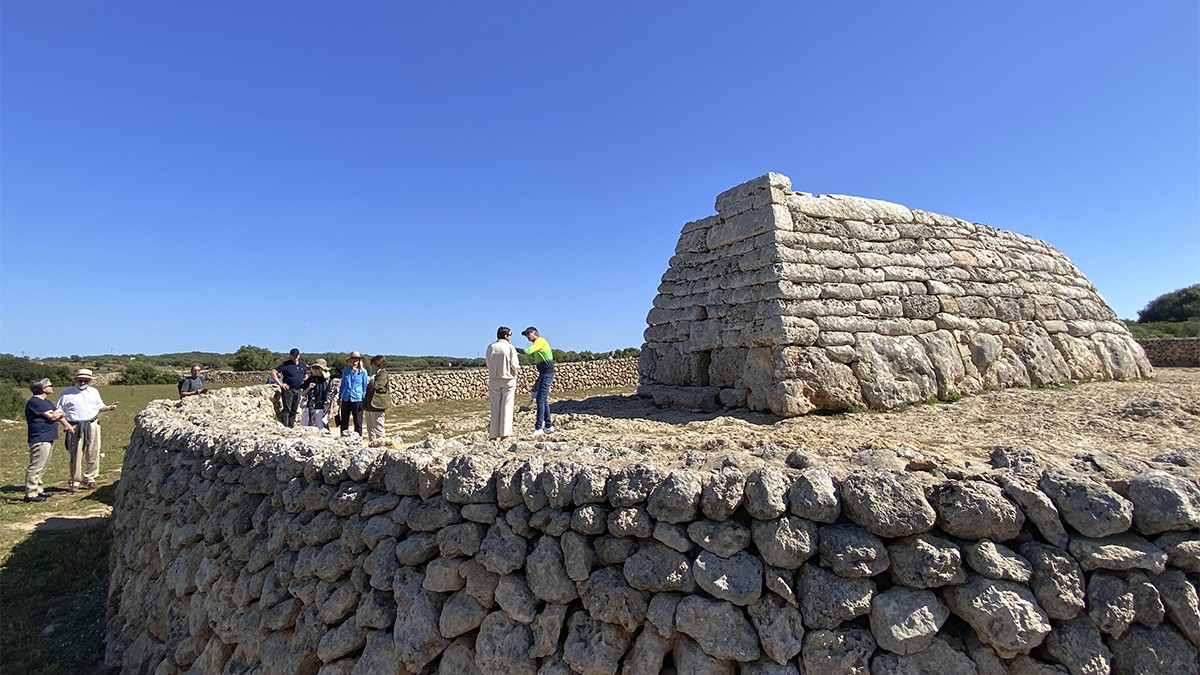
Attendees had to share a footpath with numerous grazing cattle in order to visit the “Naveta des Tudons,” a World Heritage Tayalot burial site from the pre-Phoenician Bronze Age 1,200-750 B.C., a slightly tapering square stone structure surrounded by a circular stone wall. From there it was onto Ciutadella and the gardens of Sant Ignaci designed by Alvaro de la Rosa followed by lunch at a fish restaurant in the port. The afternoon included tours of the Rocamar garden, by Alvaro de la Rosa, the private in-town palace of Pepe Olivar, the Baron of Lluriach, and Son Vell Garden by Alvaro de la Rosa on the outskirts of Ciutadella.
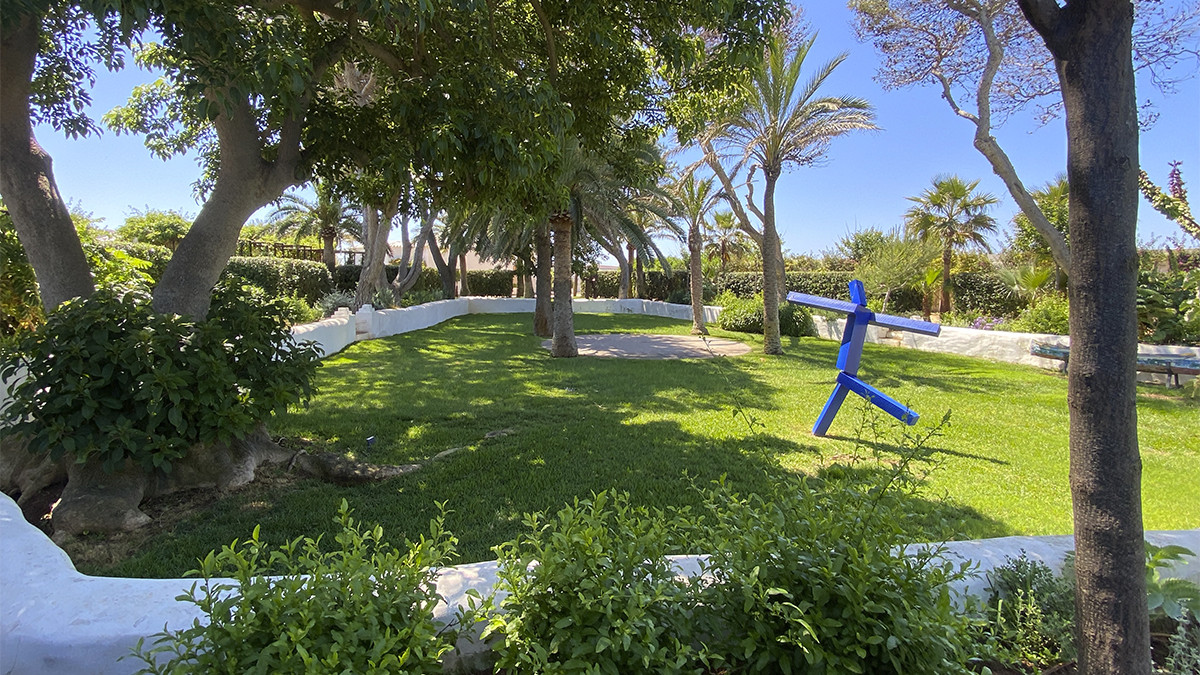
The next day included a relaxing two hour ferry from the Port of Ciutadella in Menorca to the Port of Alcudia, Mallorca, the group had lunch at the Yannick & Ben Jakober Foundation was followed by an afternoon visit to Sa Vinya Vella, a Fernando Caruncho garden created 30 years ago for the Countess of La Coruna. Then on to the capital city of Palma and the wonderful Hotel Sant Francesc.

For a Balearic touch of Italy, the excursion featured a visit to the historic eighteenth-century gardens of Raixa, created by Cardinal Despuig, a collector of Roman sculpture, after his stay in Rome. A staircase down to a belvedere overlooks a water feature and the broader landscape.
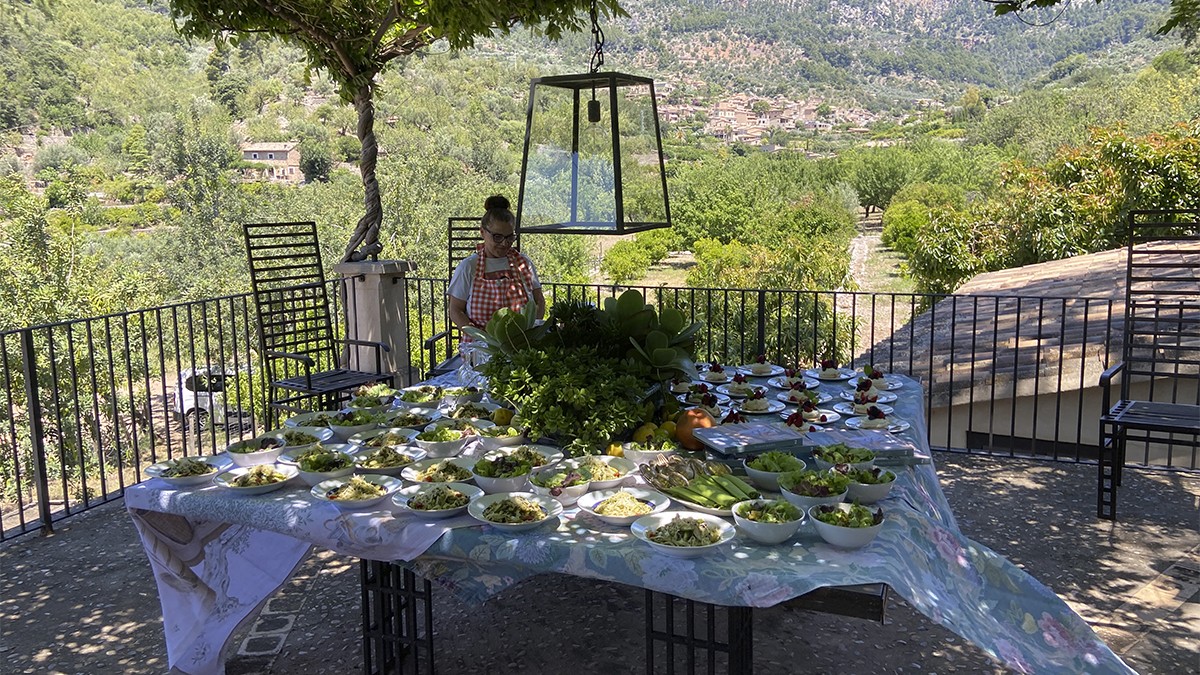
In the elegant citrus valley of Soller, artist Francesca Marti and her husband Gunnar Dahl opened their home and garden, and provided a sumptuous lunch of homemade tagliatelle and salad from their garden.
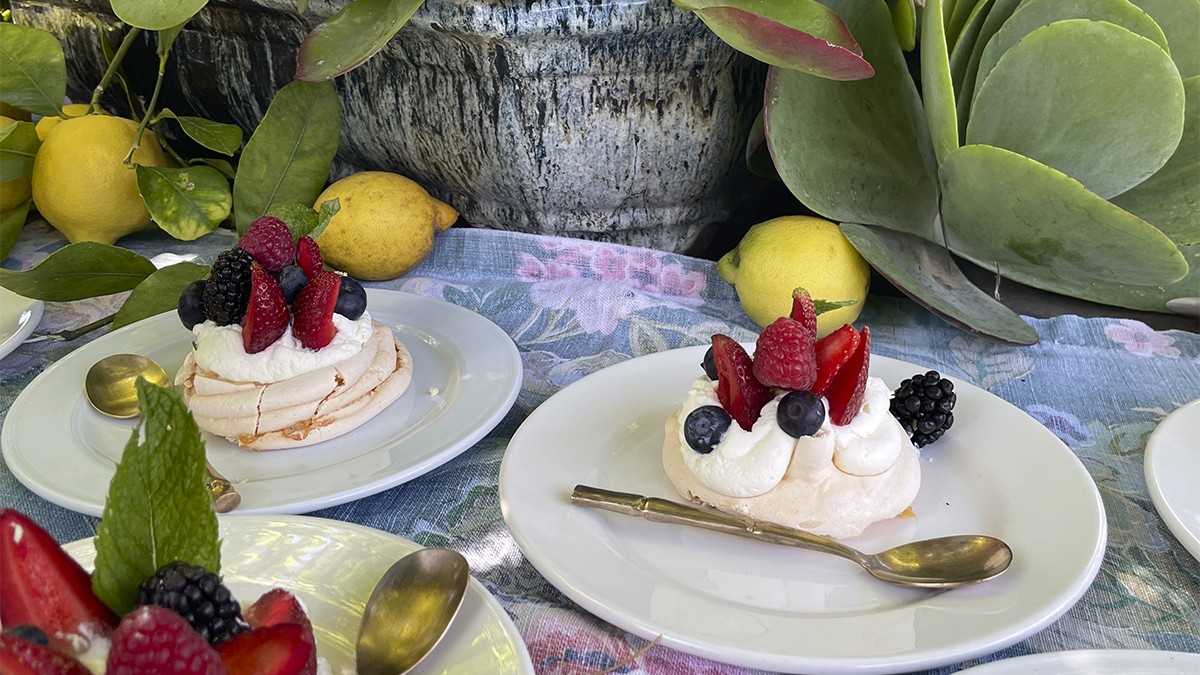
From there it was onto the Gardens of Alfabia, of Arabic origin, which has been owned by the Zaforteza family since the 1100s.
The town of Valldemossa is well known for the Carthusian Monastery and gardens where George Sand and Federic Chopin lived in the winter of 1938. There's also a private rose garden of the Marquises of Ysasi in the monastery. Lunch. was held on the terrace of the SONMO FOOD LAB, with terrific views of the monastery.

In mid-afternoon, the group explored the 1,500-hectare Son Moragues, the country home and eco-farm with ocean views. Part of the estate is located on a hillside that’s peppered with stone staircases and pathways, a group of which led extended up several hundred feet to an “oasis”—a stonewall enclosed circular pond bordered by small structures that functioned as artists’ retreats. An early evening stop at the Belmond La Residencia Hotel Gardens in the town of Deia, home of the late poet and author Robert Graves (know. Fo “I, Claudius,” “The White Goddess,” and “Goodbye to All That,” among others), where attendees trolled the grounds and enjoyed drinks and tapas.
The next day featured a visit with former Zurich residents Hans and Helene Lindgens, and their landscape architect Hans Achilles, who created a wonderful garden from an overgrown 15,000 square meter patch of land; it now features an array of garden rooms and sculptures, and even a rosemary lawn. Light colored stone walls of varying heighths (some sprouting cacti) help delineate the site, which includes pools and other water features, allées, groves of grasses, roses, and other plant materials, accessed by a rectilinear array of paths.
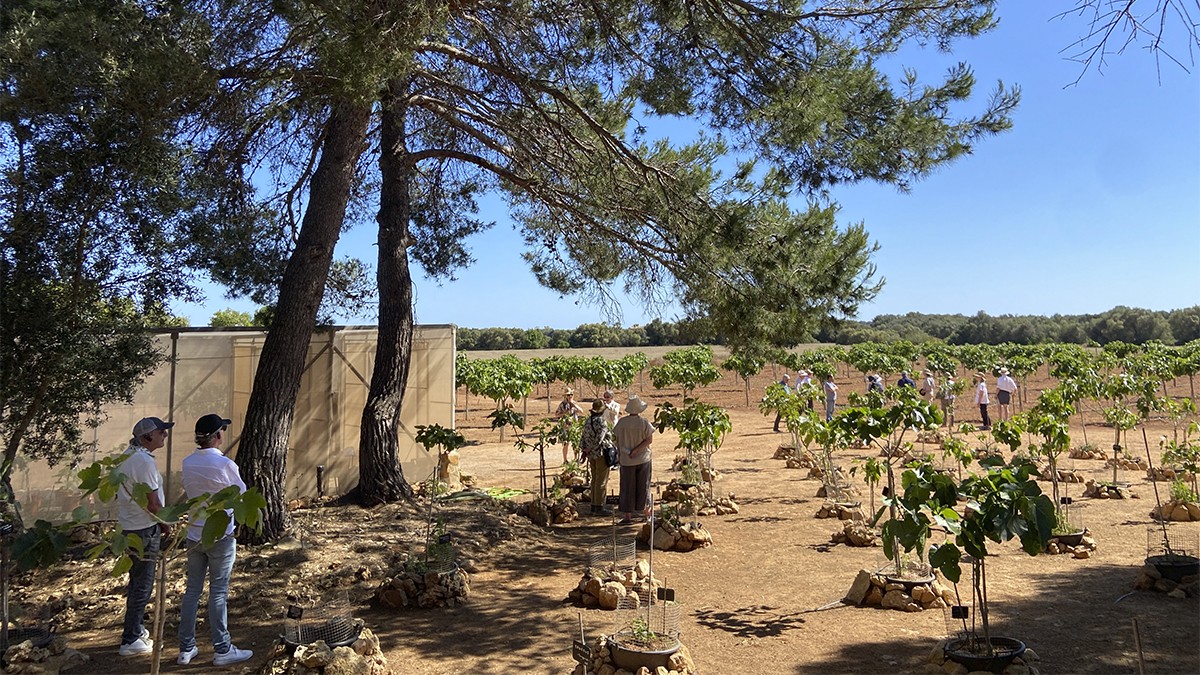
From there the group decamped to Son Mut Nou, quite possibly the most unusual and endearing destination of the entire excursion. Owner Montserat Pons is a connoisseur of figs and he is cultivating some 3,000 fig trees representing more than 1,400 varieties from around the world, including 245 found on the Balearic Islands (chronicled in a book he authored). At his estate, he has figs from 64 countries, some of which he grows in orchards and others tended to in a stone wall enclosed “Figueretum” that includes specimens labeled as being from Brazil, Mexico, India, Croatia, China, Indonesia, and elsewhere.

Pons, an engaging Pied Piper of Figs, enthused about the collection and concluded the tour with a tasting of fig-related comestibles such as fig pate and fig wine.
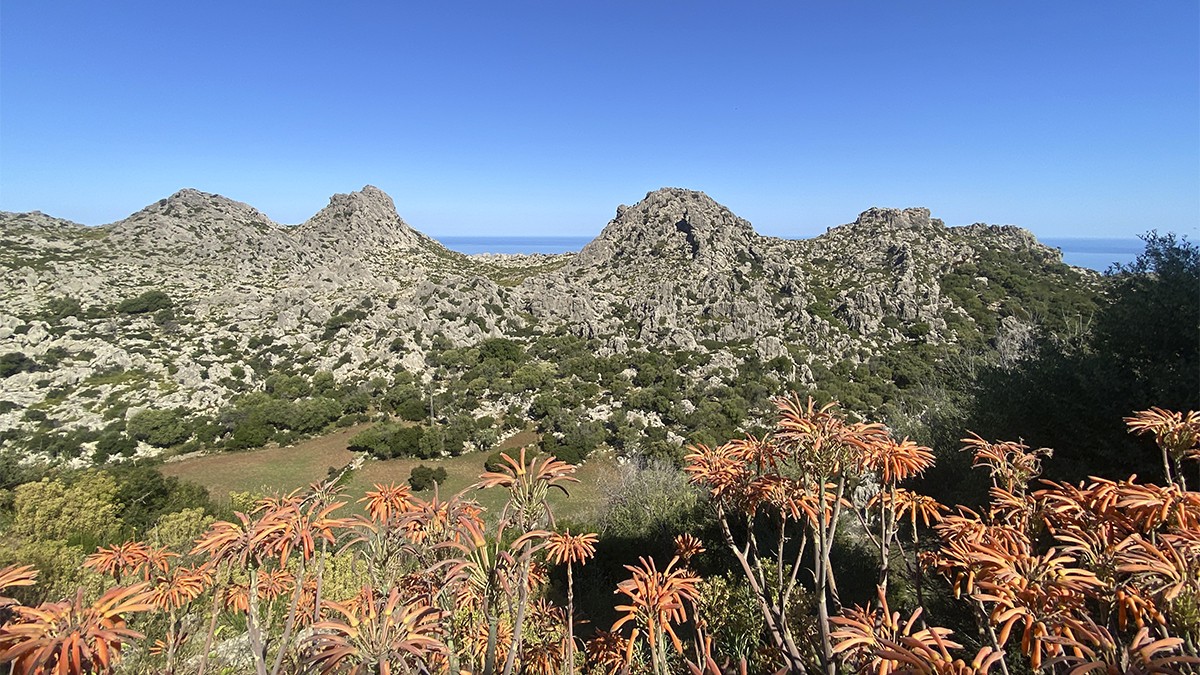
To access the Mediterranean Wildlife Foundation, the group first traveled in three vans that had to scale mountainous wooded terrain laced with switchbacks to reach a small stone house with breathtaking views of valley below and the sea in the distance. From there, the vans descended into the valley to the country estate, Ariant, with a garden designed by the late Heidi Gildemeister, author of Gardening the Mediterranean Way. The house was accessed by a boulder studded walkway with a wealth of native trees and grasses that opened onto a broad lawn. Refreshments were provided in one corner shaded by palm trees.
After retracing the arduous network of switchbacks the next destination was the town of Pollença on the northern part of the island. One destination was the family-run textile workshop Teixits Vicens, which makes fabrics inspired by ikat techniques.
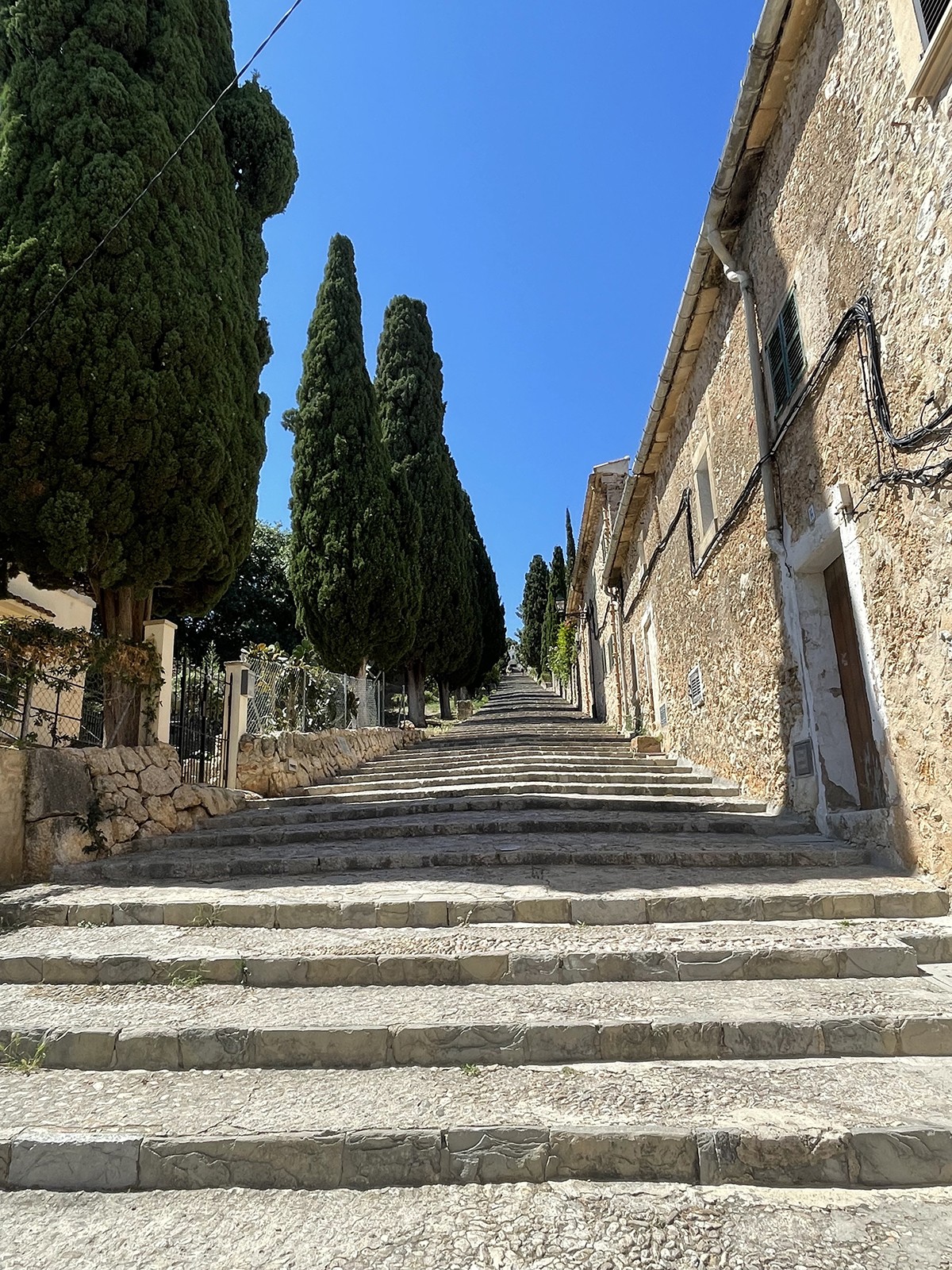
The other was the broad, steep, cypress-tree flanked staircase that led to a small parish church. There are 365 steps—one for each day of the year—and the view to the town from the top is riveting. However, visitors to the church were met by a sign that read “The church is closed due to a wedding!” Sitting outside one could see elegantly dressed wedding attendees arriving for the event, and the women, notably, navigated the precipitous stone stair case in high heels.
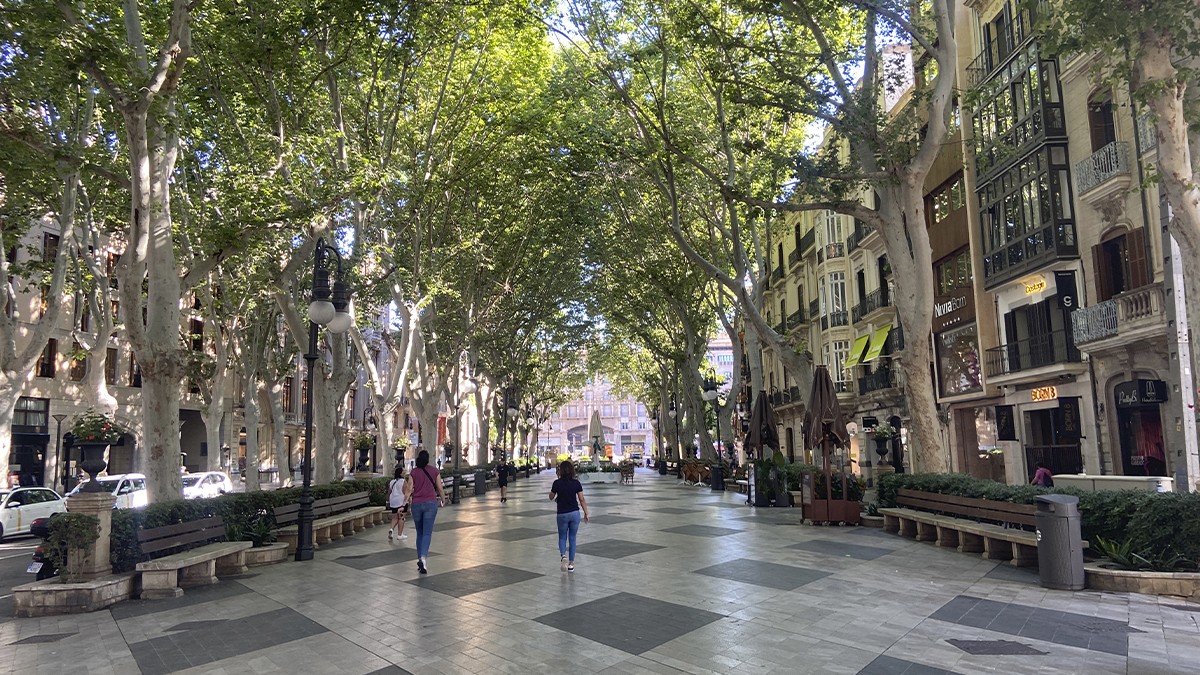
The final day was spent in the capital city of Palma and included its grand and imposing harborside gothic Roman Catholic Cathedral of Santa Maria built between the thirteenth and seventeenth centuries. In the early twentieth century, Antoni Gaudi oversaw a wide-ranging redesign of the interior.

Sunlight filtered through various stained glass windows carpeting the floor, walls, and columns with an array of colors. The chapels featured elaborate sculpture and artwork dedicated to Saints Sebastian, Jerome, Martin, and others. An anteroom included intricate and richly detailed fourteenth and fifteenth century panel paintings and altar pieces depicting the lives of saints and the Virgin Mary.
Next was a visit to what in Venice would qualify as a palazzo—Can Vivot, an impressive manor house owned by the Counts of Zavella. The property is accessed by a small door on a side street that opens onto a stone courtyard and a grand stone staircase. From there, visitors pass through a sequence of high-ceiled rooms resplendent with tapestries, paintings, elaborate carvings, rare books, centuries-old period furniture, and other treasures. Following lunch, attendees visited the Pilar & Joan Miro Foundation, which opened in 1992 and features an impressive selection of works by the famous Spanish painter.
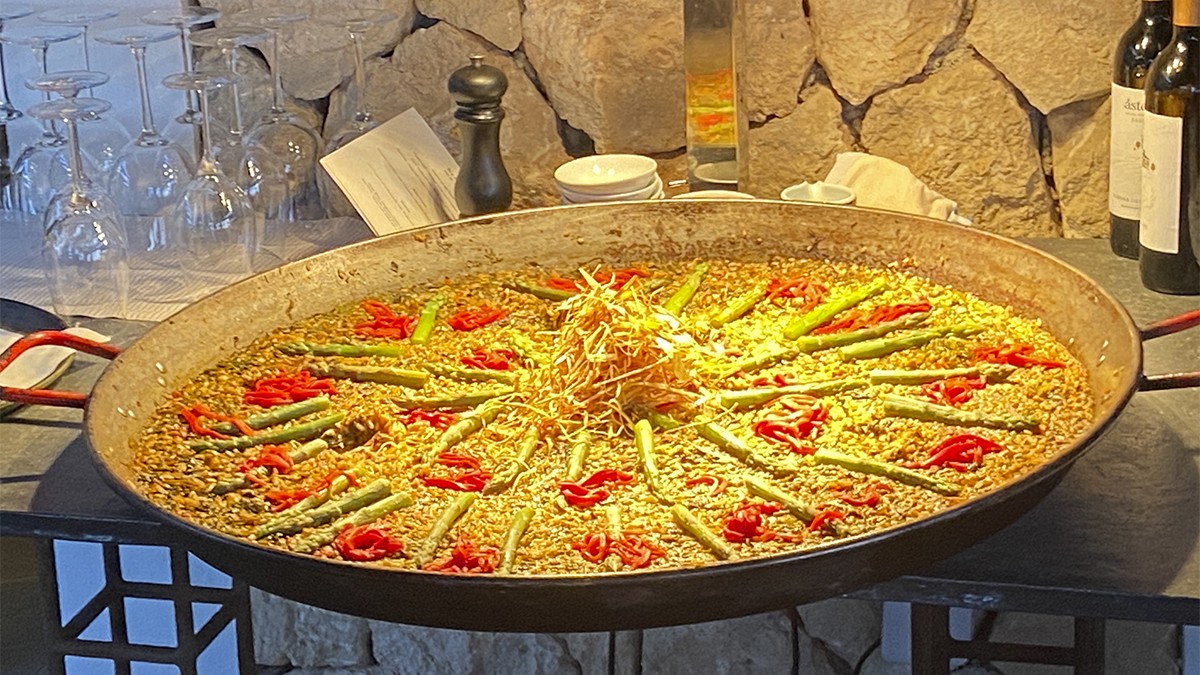
The excursion closed with an exquisite farewell dinner at the Sea Club at Cap Rocat, a coastal, cliff-side stone fortress that is now a luxury boutique hotel. At candlelit tables facing the Mediterranean, the group dined on superb local cuisine including burrata with aubergine tartar and coriander pesto, red tuna tartar with yellow pepper sauce and tempura crunch, and Mallorcan style rice with vegetables, baby beans, and sherry aioli, as well as excellent Spanish wines—Hermanos Luton (D.O. Rueda) and Corimbo Reserva (D.O. Ribera del Duero)—and spent hours recounting the past week’s adventures. It was an unforgettable finish to a remarkable excursion. Thank you Sofia, and thanks, also, to the wonderful people we met in Menorca and Mallorca.



